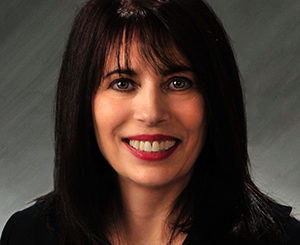The market research industry is the small, unglamorized cousin of the advertising and tech fields. Unlike its cousins, however, when it comes to diversity, researchers of color (ROCs) are often disconnected and without community. In a year that has presented some of the most intense racial moments in decades, diverse voices in research, insights, and strategy are needed more than ever. Unfortunately, not only does our field lack diversity, but for ROCs, there is also a lack of connectivity within it and awareness outside of it.
No Place for ROCs to Call Home
Currently there is no “home” or national network for ROCs, which presents a different kind of crisis. Because our profession is no longer owned by the agency world, we often find ourselves spread across different companies or within consumer insights departments of various organizations and brands. This has not only hindered the ability for ROCs to find, connect, and network with each other, but it has also created a gap in the marketplace and become a problem for companies seeking the multicultural expertise.
Organizations such as Insights in Color and Colour of Research (CORe) are trying to change this reality for the next generation of researchers by challenging the industry and creating formal communities for ROCs. However, until that change can be fully realized, the research industry must come to terms with what it really means to be a minority in research and the tensions ROCs often face in our workplaces as well as in the work that we do.
How Race Shows Up in the Workplace
For most people of color, being a minority in the workplace can be an emotionally exhausting and traumatizing experience. For researchers of color, dealing with these experiences while also navigating market research careers can feel doubly chaotic and surreal. When entering the research field for the first time, most researchers start off investigating mainstream brands and audiences and eventually encounter our first diversity projects. It is in these moments that ROCs are forced to navigate some of our most painful workplace tensions.
In the workplace, it is not uncommon for the faces of ROCs to be used on websites, proposals, and creds decks to serve as proof of our company’s diversity efforts and research capabilities. This is highly ironic as ROCs find ourselves building strategies that speak to, attract, and retain diverse audiences in our work projects, and then show up to a workplace environment that does not integrate those lessons internally by demonstrating an understanding of how to speak to, attract, and retain diverse talent.
Once ROCs start working on diversity projects, it can turn into an endless train of expectations. When D&I initiatives or multicultural research projects emerge, ROCs find that we are: 1) automatically assumed as the project leads, 2) tapped to represent the perspectives of all colleagues of color or multicultural consumers, or 3) obligated to speak up on behalf of multicultural colleagues and consumers because no one else is there to do so.
How Our Industry Reminds ROCs of Our Worth and Value
The very nature of what our industry does, segmenting and classifying consumers by demographic, attitudinal, and behavioral measures, forces many ROCs to confront the gross mistruths, generalizations, and stereotypes that exist about people who share our cultural backgrounds. Unlike other professions, ROCs have to see color in order to be great at what we do, and when it comes to our work, ROCs are constantly reminded of our standing and worth in our workplace, as well as in this country.
Often, ROCs witness how projects targeting “mainstream consumers” (i.e., majority white) are assigned large and robust budgets, while projects for multicultural consumers request the same amount of outputs (if not more) with budgets that are half the size or less. In some instances, ROCs even witness diversity teams being forced to campaign for more money or compete with other ethnic-group task forces for more resources from a pot that is already too small to begin with.
Finally, ROCs learn early on that most projects focusing on our demographics tend to happen as an afterthought, as an add-on to larger mainstream initiatives, or from a diversity PR crisis. Instead of finding new insights and nuanced stories, these projects are usually created to validate antiquated stereotypes or to identify the cross-section of mainstream insights that could also conveniently work for consumers of color. In fact, it is common for ROCs to be told that the multicultural insights we uncover could never appeal to mainstream audiences—a myth that has been disproven many times in the past.
How ROCs Shoulder an Added Moral and Ethical Burden
Being an ROC means serving as cultural liaisons in our job functions where we become language translators and reality checks for work that includes multicultural audiences. When ROCs do point out concepts that won’t work, we are usually forced to defend our rationale to colleagues and clients who don’t believe our expertise to be an accurate representation of our own cultural groups. Having our intellect questioned by clients and colleagues who have never studied or been a part of these groups is an added point of tension ROCs have to endure.
In many cases, ROCs speak up and translate language and cultural nuances voluntarily, knowing that if we don’t, the research methodology or outputs would be incorrect. In this regard, ROCs often find that we are not only advocating for fair treatment for ourselves but also for members of our communities who would be indirectly or directly impacted by our work.
For instance, we immediately face an ethical question when presented with project briefs for products that are known to adversely affect communities of color, such as sugar-laden foods and beverages. In 2019, a report by the University of Connecticut Rudd Center for Food Policy and Obesity found that junk food advertising disproportionately targeted Black and Hispanic youth, contributing to health disparities, a fact that is commonly known to Black and Hispanic researchers. In this case, does the ROC take a stand and decline the work in order to prevent the company from targeting our communities more efficiently which might lead to greater health disparities? Or do we do the work and hope to paint a better, more human picture of our communities with the goal of pointing out why this is a problem and what should be done about it? It is a tricky question because, like so many projects in our industry, what happens to our work once it leaves our hands is ultimately not up to us.
Dismantling a Trauma-Inducing Industry
For ROCs, the market research industry can be emotionally draining and exhausting. From knowing that the work we do has a high chance of being dismissed to navigating majority white workspaces and finding no reprieve in a community of individuals who look like us and experience the same issues. This creates a perfect storm for burnout, dissolution, and mass escape—the latter of which happens much more frequently than it should.
ROCs are in uniquely transformative professions that can truly affect the lives of others by telling some of the world’s most beautiful and often overlooked consumer stories. If our industry is responsible for powering the messaging, branding, and innovations of some of the world’s most renowned organizations, then there is a critical need to ensure that diverse voices are always included in the work we do.
Doing this correctly, though, requires a shift in our industry—one that starts with acknowledging the tensions ROCs face in our field and that eventually gets real about how and why the market research industry fails at diversity. Creating diversity groups and networking collectives is a great start but alone won’t solve the actual issue of ROCs having to navigate an outdated system that was never built with multicultural researchers or consumers in mind.
Once we can admit that there is an inherent problem in the way our industry functions, on both the brand and agency sides, we can begin finding ways to solve some of our deepest, most long-standing issues and create the kind of research community we hope to see.




Be the first to comment